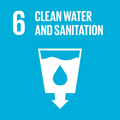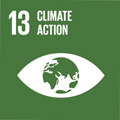- Docente: Alessandra Scagliarini
- Credits: 3
- Language: English
- Teaching Mode: Traditional lectures
Learning outcomes
The course aims to provide the basis of systemic thinking for the improvement of surveillance programs, timely response to emergencies and economic savings by applying the OH approach. It will make students understand the need for an integrated and cross-sectoral approach toward the achievement of the Agenda 2030 SDGs and provides basic knowledge on the main issues related to health at the human/animal/environment interfaces. Students will finally understand that health is a precondition, an outcome and an indicator of sustainable development. The program is targeted to students, of all disciplines, who see their future as leaders in local and international bodies such as: • National and international institutions involved in health management, food security and food security. • National and international institutions dealing with cooperation and development in the field of health and food security. • Companies active in the production and marketing of food products abroad and in international trade. • National and international research institutes dealing with sustainable development • Biosafety and bio-defence agencies. • Advice to public bodies on health management, responsiveness and sustainability. • Academic institutions. • Non-governmental organisations (NGOs) active in the field of cooperation and development
Course contents
The course will address 4 main topics (Climate change and Health, Urbanisation and health, Water and Health, Food and Health) strictly linked to UN SDGs 2030 and related to distal and proximal determinants of health:
- Distal determinants of health act through multiple intermediate steps and causal linkages and anthropogenic changes affecting landscape ecology and natural perturbation. The course will address two distal environmental determinants of health: Climate change (SDG 13) and Urbanization (SDG 11)
- Proximal determinants have a direct influence on health. The course will address two proximal determinants of health: Water Use (SDG 6, 14) and Food production (SDG 2).
Climate Change and Health
23% of all deaths in 2012 were attributable to environment globally. Potential 250.000 deaths/year are estimated in 2030-2050 due to climate change impact. Climate change affects directly and indirectly the health of animals and humans causing:
- Heat related diseases
- Increased cases of skin cancer
- Respiratory disorders
- Malnutrition
- Increase incidence of infectious diseases
- Population displacements
The module will address in particular the increased incidence of infectious diseases due to climate change. Ecologic changes (e.g biodiversity loss and community relocation), change in vectors’ biology, epidemiology changes and sociologic changes (e.g migration/travel, nutrition, sanitation, local economies) are the basis for increased diseases burden.
Two diseases will be used as examples of the above effects of climate change: Lyme disease to explore how the impact of human activities enhance human and animal interconnections; Dengue and Zika to address the travelling of tropical diseases.
Climate change is responsible of extreme events such as drought, tropical cyclones, storminess, hail, thunderstorms causing threat to health and wellbeing. Through literary and cinematographic fiction, the theme of living with disaster will be addressed.
Ethnographic examples will be used to illustrate the disease as a form of suffering associated with climate change. Climate change and global health as an object or a paradigm will be finally discussed.
Urbanisation and Health
Over history, human interaction with nature and animals has changed considerably. This has been driven by the domestication of animals, expansion of agriculture into natural ecosystems (which now covers almost 40% of the earth’s terrestrial surface), urbanisation, and by the industrialisation of food systems. Anthropogenic practices, such as changes in land use and extractive industry actions, animal production systems, and widespread antimicrobial applications affect disease transmission. Human contact with wildlife is increased, on a large scale, through road building, establishment of settlements, and increased mobility of people, hunting, consumption, and trade in wildlife for food. In the past few decades, migrations and billion international travelers enhanced the re-location of infected individuals that could potentially spread diseases anywhere in the world. This accelerated global changes also linked to an expanding global population have led to the emergence of a striking number of newly described diseases such as COVID-19. The species and numbers of animals present in the urban environment and human-animal relationships has changed over times. In the western world, people tend to be more detached from ‘livestock’, but they have developed closer bonds with companion animals. At the same time, in many countries of the Global South humans and animals, either domestics or wildlife, live in close proximity even in urban centers(e.g wet markets, wild animals kept in holy temples or stray).
The module will address the drivers linked to urbanisation that enhanced the emergence of new diseases in humans. The cases of COVID-19 and Ebola will be presented and discussed.
Microbial communities can be transferred between both humans and animals through close contact. More urbanized and walled-in built environments have a greater content of human-associated microbes compared to more rural and open dwellings. Introducing pets into a household lead to significant changes in the house dust microbiome.
The past and present of urban centers will be presented with regard to the health risk factors. The co-exitance of the animal in human settlement (e.g. whether the bones are found amongst food remains or in a discrete burial) in ancient times will be described and discussed.
How do urban centers look like today? what are the legislative implications of the management of waste and urban pollutants to preserve the health of those living in cities? These themes will be presented and debated.
Water and health
According to World Health Organization (WHO), providing access to safe water is one of the most effective instruments to promote health and reduce poverty. Water safety and quality are fundamental to human development and well-being.
This module will address, recreational water as a source of well-being and groundwater and aquifers used as drinking and washing water sources. Sanitation systems, monitoring the burden of sanitation-related disease, access to safely managed sanitation and wastewater treatment, will be presented in a public health perspective.
Diseases related to exposure or ingestion of recreational water, contaminated surface water, such as public swimming pools or on public beaches, will be illustrated describing the various existing pathways for the contamination.
Sources and pathway for exposure to waterborne disease, due to the consumption of food that may be contaminated during the agricultural process (e.g irrigation ot uptake from contaminated soil or sediment) will be also presented. The different perspectives on water resources and responsible use in industrialized and developing countries will be discussed.
Food and health
According to the definition by FAO, the sustainability of diets goes beyond nutrition and environment as to include economic and socio-cultural dimensions. The need to shift to more sustainable diets and food systems is crucial, for this reason several countries started to incorporate sustainability considerations into their food policies and consumer education programs.
This module will illustrate what is the food pyramid and how this is linked to sustainability. WHO considers nutrition a critical part of health and development. The importance of a healthy and balanced diet in the growth of children and adolescents will be discussed. Better nutrition is related to improved infant, child and maternal health, stronger immune systems, safer pregnancy and childbirth, lower risk of non-communicable diseases (such as diabetes and cardiovascular disease), and longevity. Malnutrition, in every form, presents significant threats to health. Today the world faces a double burden of malnutrition that includes both undernutrition and overweight, especially in low- and middle-income countries.
The valorization of sustainable agri-food production will be analyzed under the economic, communication and environmental impact points of view.
Readings/Bibliography
Scientific papers, videos, and resources provided by the teachers
Teaching methods
The course participates in the "University's teaching innovation project!. Blended teaching and group work.
Assessment methods
Final report and discussion of projects from working groups composed of students who attended at least 70% of classes.
Teaching tools
power point, video, online resources uploaded on Virtuale
Office hours
See the website of Alessandra Scagliarini
SDGs




This teaching activity contributes to the achievement of the Sustainable Development Goals of the UN 2030 Agenda.
